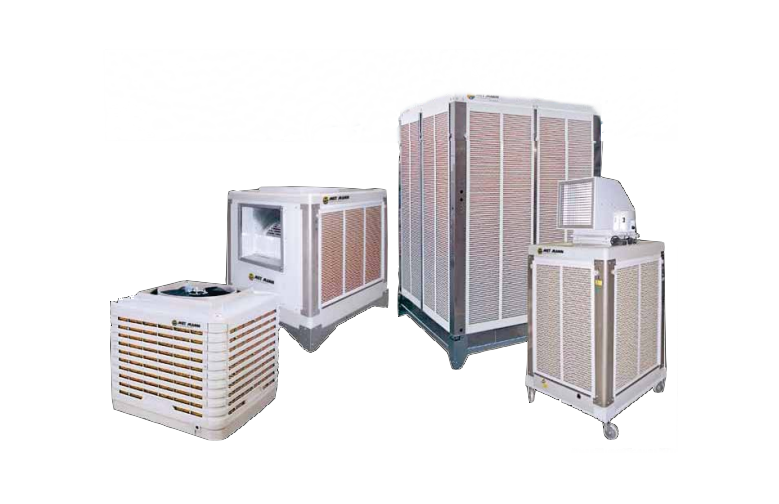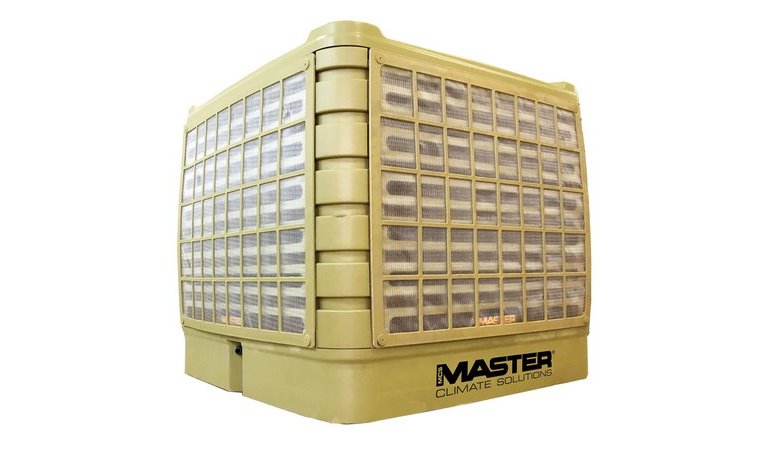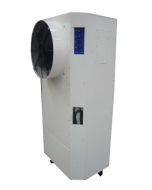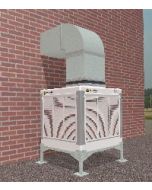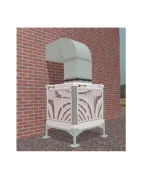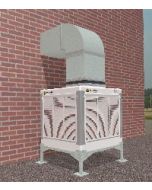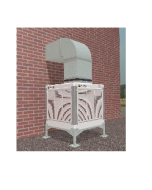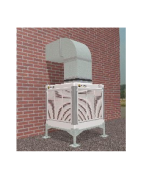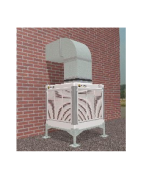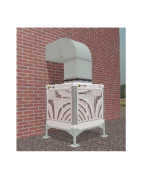A brief evaporative cooler glossary of the words and terms that are typically used in the field of evaporative cooling:
| Air | Air around us is made up from a number of different gases, of which the main ones are: • Oxygen 21% • Nitrogen 78% • Carbon Dioxide 0.03% • Water vapour 0.05 – 1.50%Various other gases, including Argon make up the remainder. |
| Condensation | Water vapour change from a gaseous state to a liquid state. |
| Dew Point Temperature | It is the temperature of air for a given vapour concentration, at which water vapour condenses. |
| Dry Temperature | It is the temperature taken with an ordinary thermometer. |
| Enthalpy | Enthalpy in damp air describes the thermodynamic state from its energetic content. It is the sum of the two elements, dry air and water vapour, so that: Enthalpy = perceptible heat + latent heat |
| Evaporative Cooling | Reduction in temperature that occurs when liquid evaporates and removes latent heat from the surface from which the evaporation takes place. |
| Frigories | This is the amount of heat that is removed from a litre of water in order to lower its temperature by 1°C. It is the energy equivalent to a Kcal/hour and is the standard unit to express removal of energy to lower temperature.For example, if a cooler has a capacity of 5,000 Frigories/h, it means it can extract 5,000 kcal/h from, say, a building. |
| Hygrometric State | For evaluating a thermodynamic state of the damp air, we use 3 values;• Atmospheric pressure • Dry temperature • Relative humidity |
| Wet Bulb Temperature | It is the temperature with a thermometer with the bulb wrapped in a piece of wetted gauze. It represents the coolest temperature air can be at the current ambient condition |
| Psychrometric Chart | This is a chart that shows the relationship between air and the water in different conditions of temperature, enthalpy, humidity, and vapour concentration. It is the principle tool for designers of cooling and dehumidification systems |
| Psychrometrics | The study of properties and thermodynamic processes of damp air |
| Relative Humidity | In layman’s terms it is the amount of water vapour in air expressed as a percentage of that when the air is saturated. But in psychometric terms it is actually the vapour pressure of the air at ambient temperature compared to the vapour pressure of the air at the same temperature when saturated, and is expressed as a percentage. |
| Specific Enthalpy | This is a measure of thermal energy in air and is expressed in formulas as ‘h’ and given the SI unit of either joules per kg or kJ/kg. As temperature and/or relative humidity increase so does Specific Enthalpy |
| Specific Heat | This is the heat required to raise the temperature of a kg of air by 1°C. |
| Vapour Concentration | This is the moisture content of air, i.e. the amount of water vapour contained in an air environment. It is normally expressed by separating ambient air into water mass and dry air mass and its’ unit is Kg/Kg, meaning Kg of water in 1Kg or dry air. |
| Wet and Dry Bulb Thermometers | Correctly known as a psychometer, it has two thermometers that show dry temperature and wet bulb temperature. |

